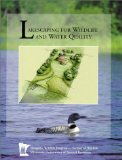| An organic, low-maintenance, non-violent way to keep Canada geese and mallards off nearby lawns. |
| ABOUT US START IDEAS DO LESS USEFUL PLANTS PROJECTS VIEWS RESOURCES TOPICS |
|
|
|||
|
Question from Deb and George in
Idaho: Canada geese love lawns that go right down to the water's edge. They like to feed on the new grass shoots, and they don't like to venture far from the water. If lawns on your site extend clear to the water, you've created prime goose habitat. To discourage the geese from hanging around on the lawns (and sidewalks -- yuck!), you'll need to change the shoreline landscaping. A useful but not overwhelming manual called Lakescaping for Wildlife and Water Quality explains that "Nuisance animals, like Canada geese and mallards, will not usually cross a buffer zone to a lawn because they are reluctant to walk through tall grass that provides good camouflage for predators." What kind of buffer zone are they talking about? A boundary of native wildflowers, grasses and sedges, shrubs, and trees that extends along the water's edge, separating it from the lawn or path. To be effective at keeping birds in the water, the buffer zone should extend 25 to 100 feet out from the shore, and also up to 25 feet into the water. It will therefore include land plants, emergent plants that grow in the shallow water along the shore, and aquatic plants that are mainly submerged or float in the water. In addition to separating the wildlife area from the human area, a buffer of natural vegetation has a number of benefits.
The aforementioned manual Lakescaping for Wildlife and Water Quality may help you plan a buffer around your ponds. It includes steps for designing a lakeshore (or pond's edge) landscape with many color photos, drawings, and comparison diagrams. Each section includes a list of references to consult for further information. Though the plant lists and sample landscapes are geared toward the Midwestern U.S. (the manual was compiled by the Minnesota Department of Natural Resources), the techniques and issues addressed throughout the manual apply whatever your region. You can get a copy of Lakescaping for Wildlife and Water Quality by calling Minnesota's Bookstore at 1-800-657-3757 or visiting the online Amazon bookstore Hope you and the geese can come to some mutually agreeable understanding. Write and let us know how it goes! Do you have a question for the LessLawn editor? |
 Lakescaping for Wildlife and Water Quality Resources for Idahoan Readers: To find out more about suitable plants native to Idaho, try visiting the Idaho Natural Heritage Program and asking them about relevant publications.For ideas, try strolling through the MK Nature Center Streamwalk, a reclaimed landfill that became a stadium and is now a series of natural landscaping demonstration areas. Idaho Botanical Garden has an artificial stream through a shady woodland with native and naturalistic plantings. To purchase native plants, check out the online catalogs at Plants of the Wild in Washington; Elkhorn Native Plant Nursery in California; or Native Plants of the Northwest in Oregon. You might find more native plant nurseries near you by browsing this List of Sources for Native Plants and Seeds. |
||
|
Thanks for visiting http://www.LessLawn.com! All site contents © 2001-2013 Evelyn J. Hadden, except where noted. All rights reserved. |